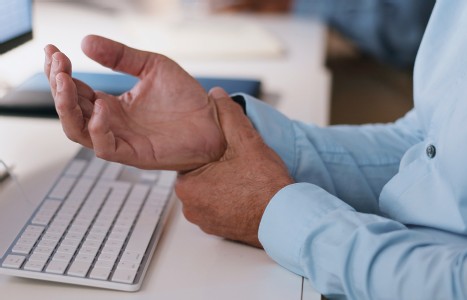It is estimated that 61% of patients with CTS avoid taking surgical options due to postoperative complications and costly surgical procedures. Chiropractic care offers a comprehensive and effective treatment for carpal tunnel syndrome, addressing the condition from multiple angles. Recent studies also have unveiled a game-changing adjunct to chiropractic treatments for CTS: nerve flossing.
Some Lumbar Differentials
Low back pain is arguably one of the most common conditions that present to our office. Some statistics even rank lumbar injuries at more than 90 percent of all work-related injuries. When a patient is acute, they don't even necessarily care about the diagnosis - it all hurts. It becomes very easy to fall into a rut and approach all cases of lower back pain the same. Part of the art of patient care is to be able to quickly and easily assess the complaints, differentiate the problem and render the most appropriate treatment.
When dealing with a hot low back, everyone knows to do the classic straight-leg raise (SLR). It remains one of the primary tests in every clinician's repertoire as a screening maneuver. But the SLR primarily creates traction across the posterior thigh, hip and spine. However, not all patients have posterior lower back pain, and sometimes the SLR can be negative on someone with acute back pain. As I have commented before, it is very important to get a thorough history, including the type, location and character of the pain. This not only helps give you a primary clue as to the nature of the condition, but also can guide your examination protocol. Remember, a good consult should give you most of your diagnosis. The examination should only serve to confirm and qualify your suspicions.
Two simple and easy maneuvers for the lower back and hip are Ely's test and Nachlas' test. Both are performed with the patient lying prone on the bench with the feet hanging over the edge. Although they are very similar, these tests can help you differentiate femoral nerve irritation, nerve-root adhesions, myospasm and disc problems.
With both tests, the patient begins prone on the table, and the leg on the side of complaint is flexed to 90 degrees. When performing Nachlas' test, the heel is brought down to the ipsilateral buttock. Note if and where the patient reports pain. Pain may be over the lumbosacral or sacroiliac area, or down the thigh or leg. This is a good screen for sacroiliac versus lumbosacral problems. Evans' text notes that this maneuver may help to reveal a "concealed" disc herniation, as it serves to move the spine into hyper-extension and aggravate the prolapsed material which would otherwise remain in the confines of the annulus.
When performing Ely's test, the setup is the same. The patient is prone and the leg on the side of complaint is brought to 90 degrees, but then it is brought to the contra-lateral buttock. If the patient has tolerated the maneuver this far, you may also stabilize the pelvis with your one hand, and gently support the bent knee and hyperextend the thigh. If there is spasm in the iliopsoas muscle or its sheath, it will be impossible to extend the thigh without great pain. If you can extend the thigh, but there is pain in the anterior thigh, this indicates irritation of the lumbar nerve roots. Evans' text also notes that in the rare case of a high- to mid-lumbar disc prolapse, the pain radiates toward the groin, as opposed to the back of the thigh.
If the above maneuvers have not produced any great complaints, you can also perform another hyperextension maneuver: the prone knee-bending test. With the patient prone, flex both knees together to 90 degrees, and then bring the heels together toward the buttocks. This test is considered positive if the patient is unable to tolerate bending both knees together past 90 degrees. This maneuver stretches the femoral nerve. Lumbar pain on one side indicates lesion at L2 or L3. Pain in the anterior thigh indicates spasm or adhesion in the quadriceps.
Let's face it - doing exams is a pain, paperwork is endless, and having to do reports is time-consuming. The reality is that your diagnosis must be supported and your care must be justified. I like these tests because they are quick and simple. It should be easy to add these tests to your exam protocol. Certainly there are other tests, signs and observations to be made in the individual case. The more information you have to confirm your findings, the more secure you are in your diagnosis and treatment protocol. These extra notes help document the severity of the patient's complaints. This extra documentation can also help make the difference if you must justify your diagnosis to an insurer or third party. Take the extra few seconds to add these tests into your exam routine. They will serve you well.
Resources
- Evans RC. Illustrated Essentials in Orthopedic Physical Assessment. St. Louis: Mosby, 1994.
- Hoppenfeld S. Physical Examination of the Spine and Extremities. San Mateo, Calif: Appleton & Lange, 1976.


